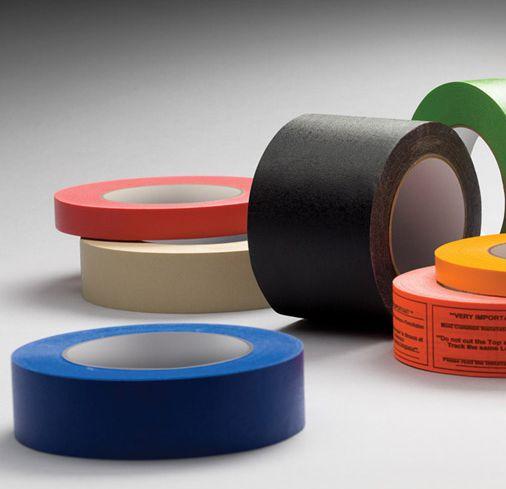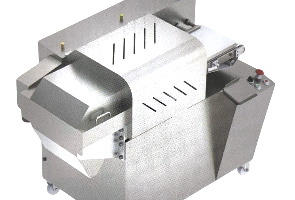
Choosing the right bonding material might seem straightforward, but the wide variety of industrial tapes and adhesives available today can make the task complex. Each product works differently, performs under specific conditions, and pairs best with certain materials. In industries where strength, speed, and durability matter, understanding these differences is essential.
This guide breaks down the basics to help you select the ideal adhesive or tape for your job. It also explains what is industrial adhesive used for, offering practical context without overwhelming details. Whether you’re working with metal, plastic, fabric, or wood, this article will give you the tools to make a smart, informed choice.
What Makes an Adhesive “Industrial”?
Industrial adhesives go beyond basic glues or office tapes. These are engineered to handle pressure, temperature, vibration, and long-term wear. They must bond strongly, resist breakdown, and match the surface they attach to.
Common Uses in Industry
So, what is industrial adhesive used for? You’ll find them in aerospace, construction, automotive, packaging, and electronics. They hold vehicle panels together, seal joints in HVAC systems, and protect circuit boards. They even replace screws and bolts in modern design to save weight and space.
Types of Industrial Adhesives
Understanding adhesive categories helps match each type to the right task. Each has strengths and limits.
1. Structural Adhesives
- These support loads and resist movement. Think of joining metal beams or plastic parts. They usually come in two parts—a resin and a hardener—that must mix before application.
2. Pressure-Sensitive Adhesives (PSAs)
- PSAs stick with slight pressure and suit lighter tasks like labelling or mounting. These come on a roll or sheet and bond instantly on contact.
3. Hot-Melt Adhesives
- Applied hot and cooled to form a bond, these work fast. They handle packaging or light assembly but may weaken under heat.
4. Contact Adhesives
- Both surfaces must be coated and left to dry before joining. Once bonded, parts stay connected firmly. Used for furniture, flooring, and plastics.
5. Epoxies and Acrylics
- Epoxies work well with metals and ceramics. Acrylics stick to plastics and resist moisture. Both cure to form tough bonds.
Types of Industrial Tapes
Industrial tapes serve similar roles, especially when a clean application or flexibility is needed. The right tape can bond, insulate, seal, or even conduct electricity.
1. Double-Sided Tapes
- They hide inside the joint and leave no external marks. These tapes work best in signage or mounting.
2. Duct and Gaffer Tapes
- Both are heavy-duty, but gaffer tape is removed cleanly. Duct tape seals pipes, fixes tools, and survives rough surfaces.
3. Electrical and Insulating Tapes
- Designed to resist current or heat, these tapes protect wiring and electronic parts.
Key Factors to Consider Before Buying
Choosing between industrial tapes and adhesives means understanding the conditions your materials will face. No single product fits all situations. Below are the top features to evaluate.
1. Surface Material
- Some adhesives grip plastic well but slide off metal. Others sink into porous materials like wood or fabric. Check that the adhesive matches both surfaces to be joined.
2. Temperature Range
- Ask how hot or cold your application may get. Some adhesives melt under heat. Others stiffen or crack in cold.
3. Load and Strength
- Determine if the joint must carry weight or just stay in place. Structural adhesives offer high strength. Tapes may suit lower-force applications.
4. Exposure to Water or Chemicals
- Outdoor or marine applications need water resistance. Laboratories may expose bonds to acids or solvents. Choose materials that can survive the environment.
5. Flexibility and Vibration
- In cars or planes, vibrations strain the joint. Select adhesives that stay flexible and absorb movement.
When to Use Tapes Over Adhesives?
Tapes often appeal when speed, neatness, or shape flexibility matters. They install easily, leave no mess, and conform to curved surfaces. Unlike some adhesives, tapes don’t require drying or curing time.
You might choose tape for temporary fixtures, clear joints, or soft materials that adhesives might damage. In contrast, adhesive compounds suit high-pressure or heat-loaded connections.
Application Methods and Conditions
Even the best adhesive or tape fails if applied the wrong way. Before choosing a product, think about how and where it will be applied.
- Clean the Surface: Remove oils, dust, and old adhesives. Contaminants weaken the bond.
- Dry Conditions: Many adhesives won’t cure on wet surfaces.
- Mixing Requirements: Two-part adhesives must be blended evenly.
- Open Time: Some adhesives dry quickly. You must place parts together fast.
- Clamping Needs: Structural adhesives often need pressure while curing.
Comparing the Options
Each bonding solution offers specific strengths. This table highlights key differences to help guide your decision.
Before using this table, consider your top priorities: strength, speed, flexibility, or reusability.
| Type | Strength | Setup Time | Flexibility | Best Use Cases |
| Structural Adhesive | Very High | Slow | Low | Load-bearing joints, metal bonding |
| Pressure-Sensitive Tape | Medium | Instant | High | Labels, lightweight assemblies |
| Hot-Melt Adhesive | Medium | Fast | Moderate | Packaging, fabric, light plastics |
| Contact Cement | High | Moderate | Moderate | Wood, laminate, foam |
| Electrical Tape | Low | Instant | High | Wires, electronics, insulation |
Storage and Shelf Life
Keep adhesives in cool, dry areas. Tapes should remain sealed when not in use. Check expiry dates. Old adhesives may separate or lose strength. Proper storage extends performance and safety.
Environmental and Safety Considerations
Some adhesives release fumes. Always work in a well-ventilated space and wear gloves or eye protection. Read safety instructions carefully.
When possible, choose solvent-free or low-VOC options. These protect workers and reduce environmental harm. Disposal rules vary, so follow local guidance when discarding unused products.
Real-World Examples of Application
You don’t need a degree in chemistry to understand what is industrial adhesive used for—but knowing a few practical examples helps.
- Automotive: Holds panels, trims, and interior parts
- Electronics: Bonds heat sinks, insulates wires
- Construction: Secures flooring, wall panels, and structural frames
- Textiles: Fuses fabric in upholstery or sportswear
- Packaging: Seals boxes, applies labels
Making the Right Choice
Buying the right adhesive starts with knowing your materials and end goal. Think long-term. A fast fix now may fail later. Whether you need clean removal, long hold, or resistance to extreme conditions, your task guides the choice.
Try samples when possible. Apply them to real surfaces and check bond strength after a full cure. Test under actual work conditions for the best results.
Final Thoughts
Adhesives and tapes play a hidden but vital role across industries. The right one strengthens builds, speeds assembly, and improves design. The wrong one leads to failure, waste, or even safety risks.
By learning the differences between industrial tapes and adhesives, you can match each tool to its purpose. Understand your environment, surface, and strength needs before deciding. With that knowledge, you’ll select the bond that lasts.
In every application—be it electronic circuits, automotive trims, or fabric panels—knowing what is industrial adhesive used for will lead to better outcomes. Careful selection now saves time, effort, and future repairs.
For More Information : Neotech Engineering




